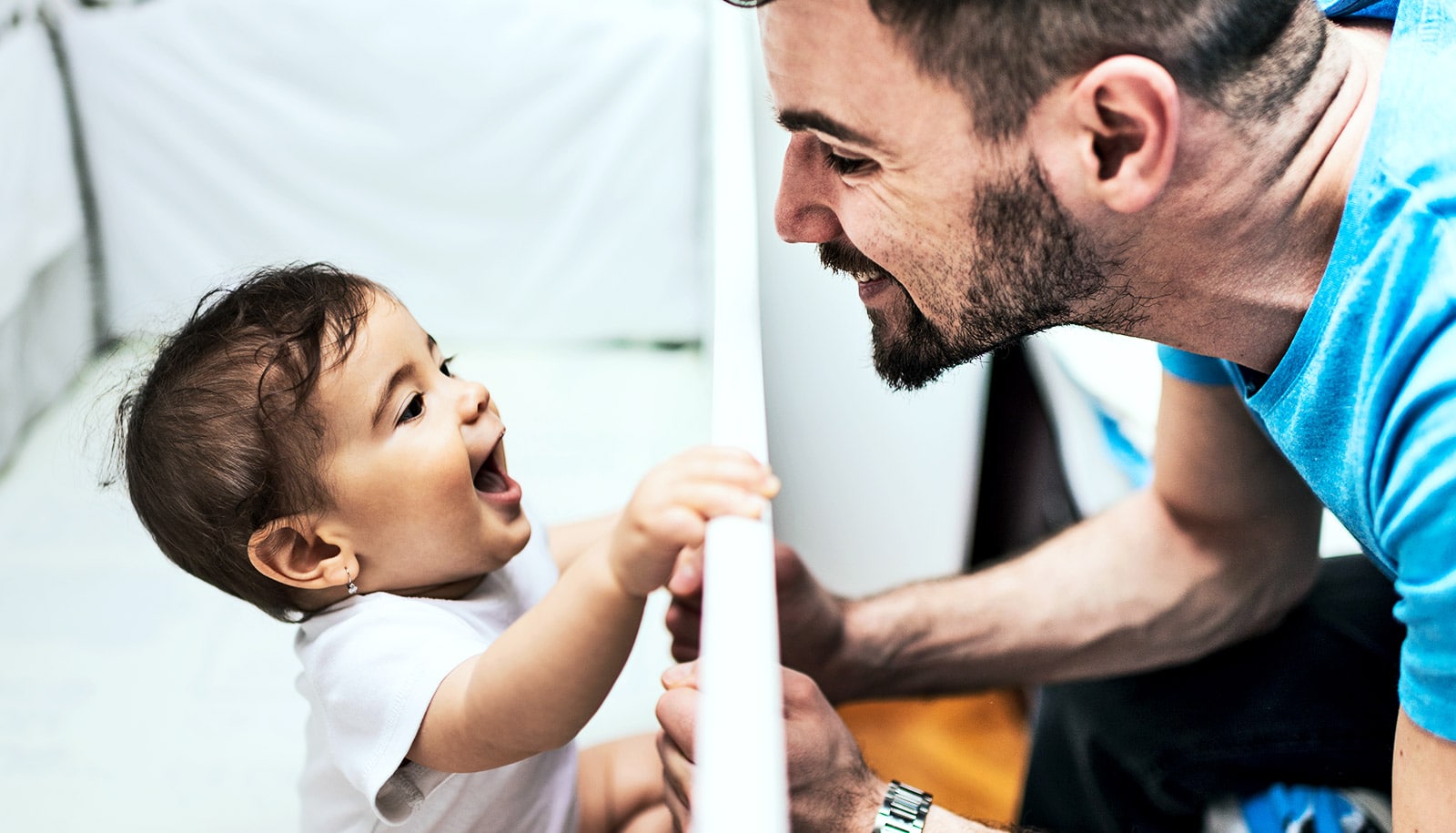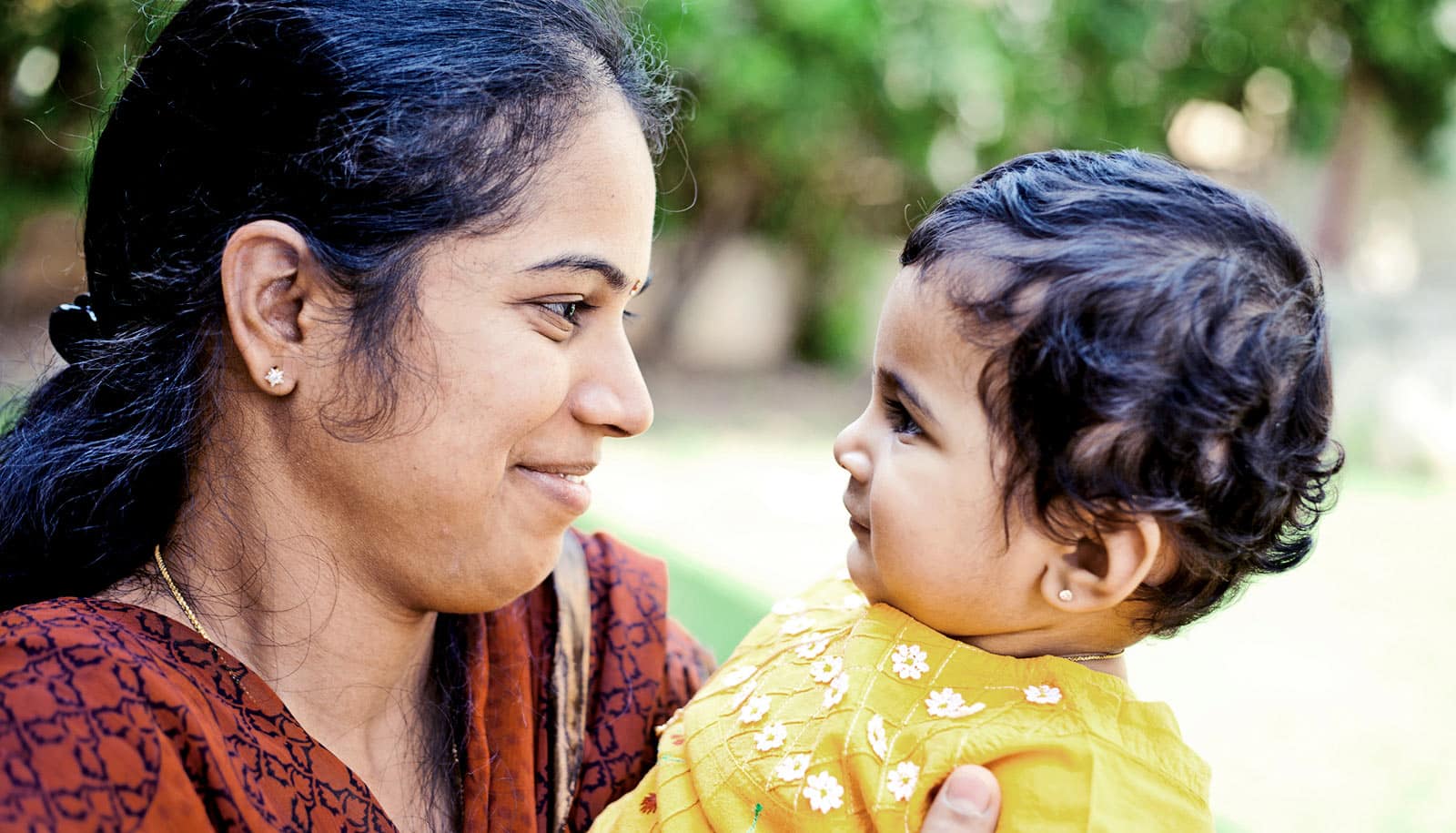Parents speaking to their baby in a high-pitched voice—known as “parentese”—and responding to the baby’s babbles with eye contact and smiles is important for infant language growth, researchers report.
In a study published in Current Biology, the researchers used a safe and noninvasive brain-imaging technique called magnetoencephalography, or MEG, to monitor infant brain activity during social and nonsocial interactions with the same adult.
They found that when the adult talked and played socially with a 5-month-old baby, the baby’s brain activity particularly increased in regions responsible for attention—and the level of this type of activity predicted enhanced language development at later ages.
The researchers compared this “social” scenario with a “nonsocial” scenario in which the adult turned away from the baby to talk to another person. This interaction showed lower activity levels in the same brain areas.
“This is the first study to directly compare infant brain responses to adult-infant social interaction versus nonsocial interaction, and then follow up with the children until they reached the age of 2.5 to see how the early brain activation relates to the child’s future language abilities,” says lead author Alexis Bosseler, a research scientist at the University of Washington’s Institute for Learning & Brain Sciences (I-LABS).
The MEG brain-imaging technology allowed the baby to move and interact naturally with the adult, which enabled researchers to track the firing of neurons from multiple areas in the baby’s brain as the adult talked to, played with, and smiled at the baby. They then monitored the infant’s brain activity a second time as the adult turned away and paid attention to someone else.
These actions naturally occur every day between adults and babies, and the study showed they have different measurable effects on a baby’s brain. Researchers found that increased neural activity in response to the social interaction at 5 months predicted enhanced language development at five later ages: 18, 21, 24, 27, and 30 months.
The researchers tracked infants’ language development using a well-documented and validated survey that asks parents about words and sentences their infants say at home.
“The connection between early brain reactions and later language is consistent with scientists’ fascination with the early age period and opens up many new questions that we, and others, will be exploring,” says coauthor Andrew Meltzoff, I-LABS codirector and a professor of psychology.
Researchers chose 5-month-old babies for the study because that age is just before the “sensitive period” for speech-language learning, which begins at about 6 months. Once this period begins, it’s especially important for infants to observe adults because attention enhances learning.
Using parentese with infants represents an intuitive desire to connect, says senior author Patricia Kuhl, a codirector of I-LABS.
“There’s an implicit understanding that language is about connection,” Kuhl says. “It’s about a communicative pathway between you and the other. This starts in infancy with the desire to make that communicative connection.”
The study’s results are particularly important for parents and early educators to understand, Kuhl says.
“We knew from previous work that social interaction is essential at 9-months of age for foreign-language learning, but the current study shows that social interaction plays a role much earlier,” Kuhl says.
“The study shows that parents’ natural use of parentese, coupled with smiles, touch, and their warm back-and-forth responses to the baby’s actions, have a real-world, measurable impact on the baby’s brain. We theorize that this parent behavior, which we call ‘the social ensemble,’ captures and holds infants’ attention and motivates them to learn at a critical time in development.”
The Bezos Family Foundation, the Overdeck Foundation, and grants from the National Institutes of Health funded the work.
Source: Lauren Kirschman for University of Washington



